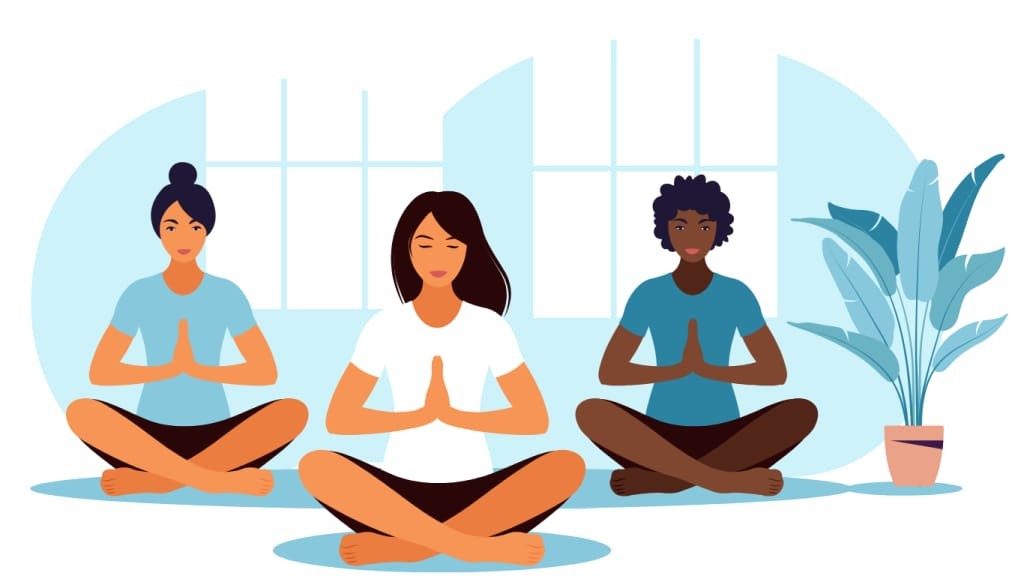The practice of mindfulness meditation could not be more straightforward: just choose a comfortable seat, focus your attention on the breath, and bring it back to the present moment whenever it wanders.
What is Mindfulness?
The fundamental human capacity to be completely present, aware of where we are and what we are doing, and not unduly reactive or overwhelmed by what is going on around us is what we mean when we talk about developing mindfulness.
It is not all in your brain; you may exercise mindfulness by either sitting down for a formal mindfulness meditation practice or by being more purposeful and aware of the things you do on a daily basis or by practicing mindfulness meditation.
We recommend that you check out our Getting Started guide if you are interested in learning more about mindfulness and how to practice mindfulness meditation.
How to Practice Mindfulness Meditation on the Go

It is possible to practice mindfulness in almost every activity that we engage in during the day, including brushing our teeth, eating lunch, engaging in conversation with friends, and working out.
By practicing mindfulness of our activities, we are able to pay closer attention to the things that we are doing. What you are doing is the exact opposite of going through the motions; rather, you are paying attention to your senses and becoming aware of your thoughts and feelings.
You may practice mindfulness even when you are too busy to meditate if you include it into your everyday life and have it become a part of your routine.
Learning How to Meditate
Making a decision on how much time you will spend "practicing" at the beginning of the process is beneficial. In the alternative, you could get obsessed with determining when to quit. It may be beneficial to choose a little period of time, such as five or ten minutes, particularly when you are just starting out. In the long run, you will be able to lengthen it to twice as long, and then maybe up to forty-five minutes or an hour. Employ a timer for the kitchen or the timer on your mobile device. There are a lot of folks that do a session in the morning and in the evening, or they do one session or the other. If you sense that your life is hectic and you have a limited amount of time, it is preferable to do some rather than none at all. When you have some time and space on your hands, you will be able to do a little bit more.
enjoy a decent area in your house, preferably one that is free of an excessive amount of clutter and where you can enjoy some peace and quiet. You should either sit in natural light or leave the lights on. If you want to, you may even sit outdoors; however, you should choose a location that has a low level of distractions.
This particular posture exercise may be used as the first step of a time of meditation practice, or it can just be utilized as something to do for a minute, perhaps in order to steady oneself and find a moment of rest before returning to the fight. In the event that you are experiencing injuries or other physical challenges, you are able to alter this exercise to accommodate your circumstances.
How to Sit for Mindfulness Meditation
- Take your seat. Whatever you’re sitting on—a chair, a meditation cushion, a park bench—find a spot that gives you a stable, solid seat, not perching or hanging back.
- Notice what your legs are doing. If on a cushion on the floor, cross your legs comfortably in front of you. (If you already do some kind of seated yoga posture, go ahead.) If on a chair, it’s good if the bottoms of your feet are touching the floor.
- Straighten—but don’t stiffen—your upper body. The spine has natural curvature. Let it be there. Your head and shoulders can comfortably rest on top of your vertebrae.
- Situate your upper arms parallel to your upper body. Then let your hands drop onto the tops of your legs. With your upper arms at your sides, your hands will land in the right spot. Too far forward will make you hunch. Too far back will make you stiff. You’re tuning the strings of your body—not too tight and not too loose.
- Drop your chin a little and let your gaze fall gently downward. You may let your eyelids lower. If you feel the need, you may lower them completely, but it’s not necessary to close your eyes when meditating. You can simply let what appears before your eyes be there without focusing on it.
How Much Should I Meditate?
It is not more difficult to meditate than what we have explained in the previous paragraph. Not only is it that easy, but it is also that difficult. Additionally, it is of great value and power. Making a daily commitment to sit, even if it's only for five minutes, is the most important thing. According to Sharon Salzberg, a meditation instructor, "One of my meditation teachers told me that the moment you sit down to do it is the most important moment in your meditation practice." For the reason because at that same moment, you are expressing to yourself that you believe in change, that you believe in taking care of yourself, and that you are realizing these beliefs. Not only are you demonstrating a virtue, such as compassion or mindfulness, in a conceptual sense, but you are also bringing it into direct experience.

